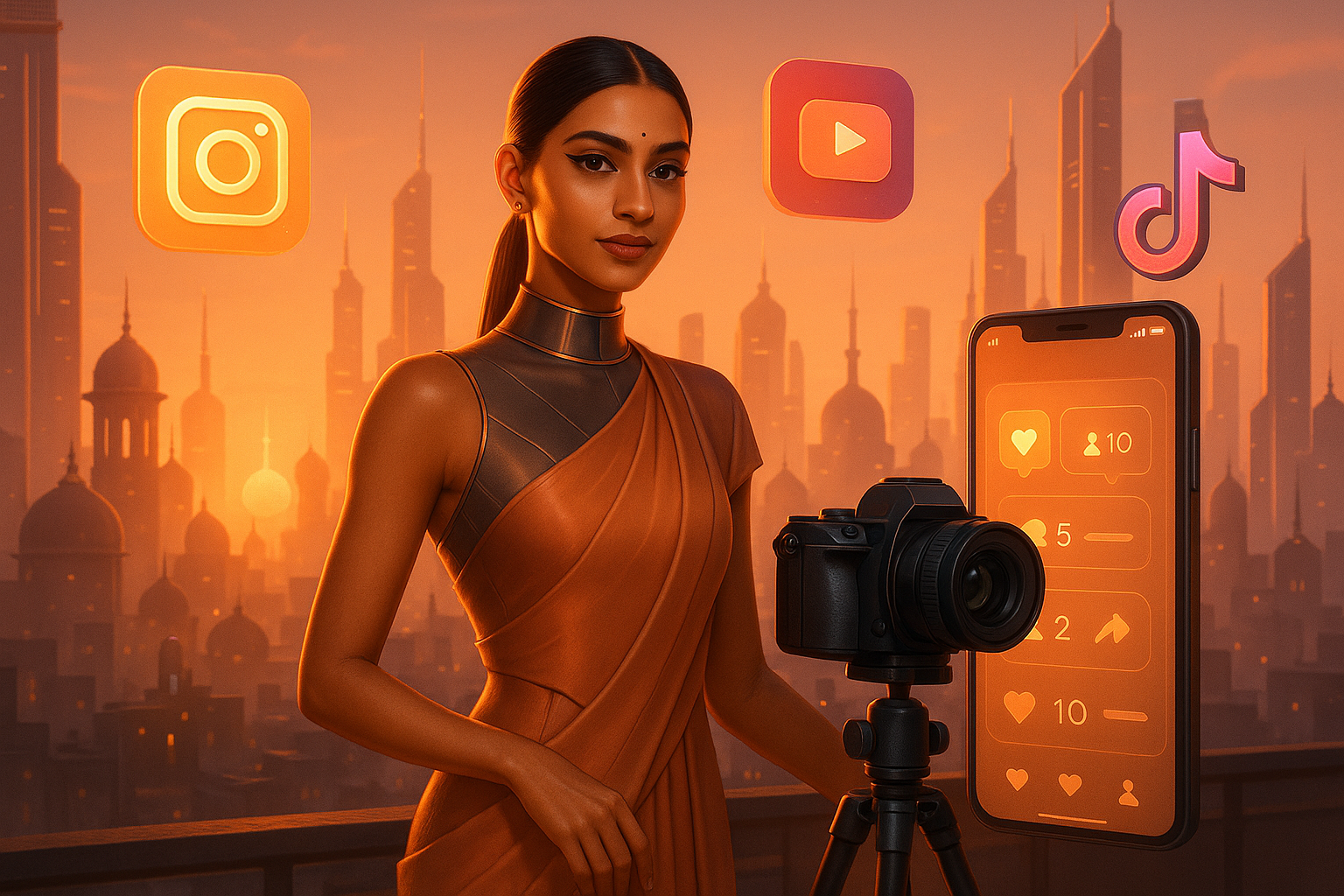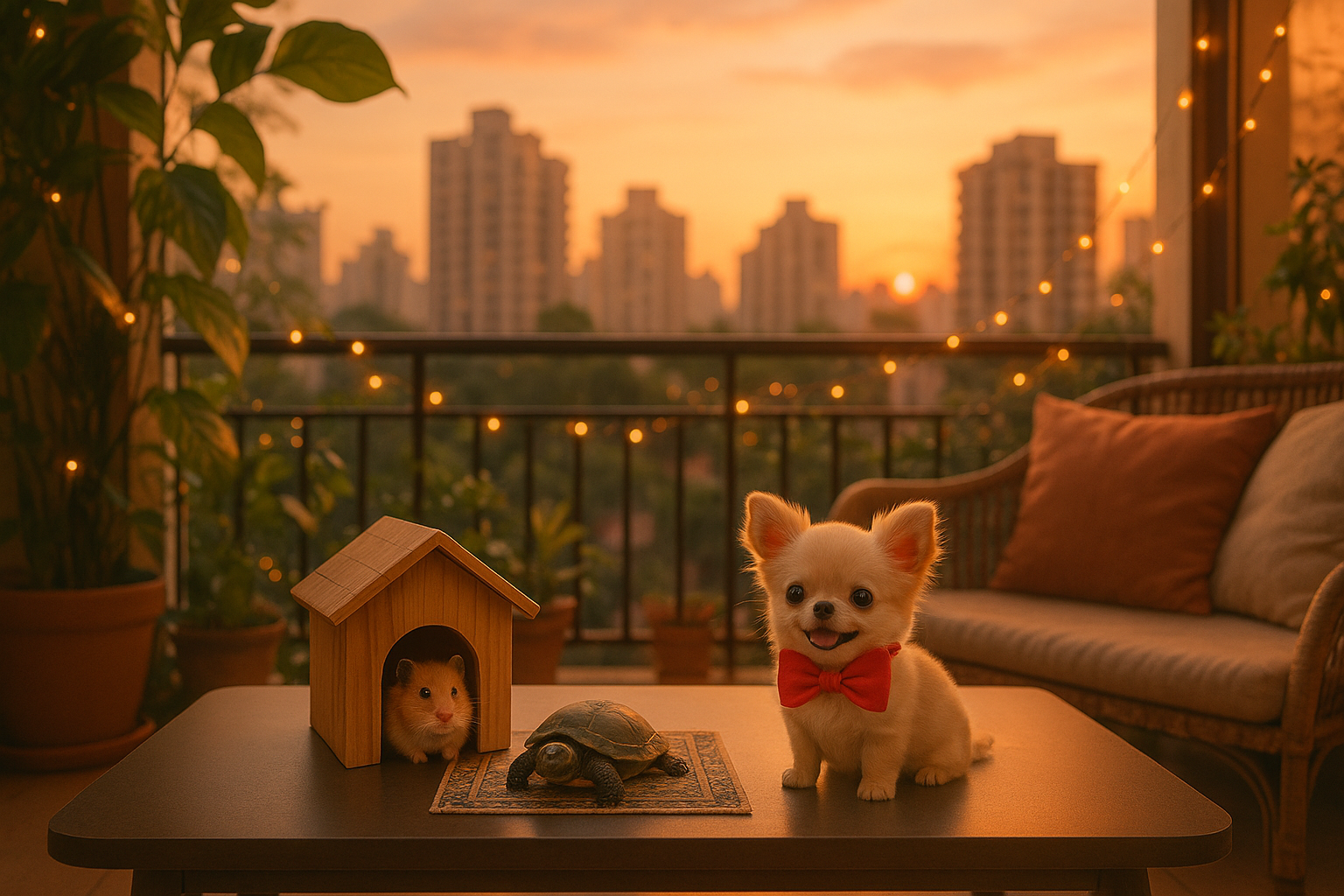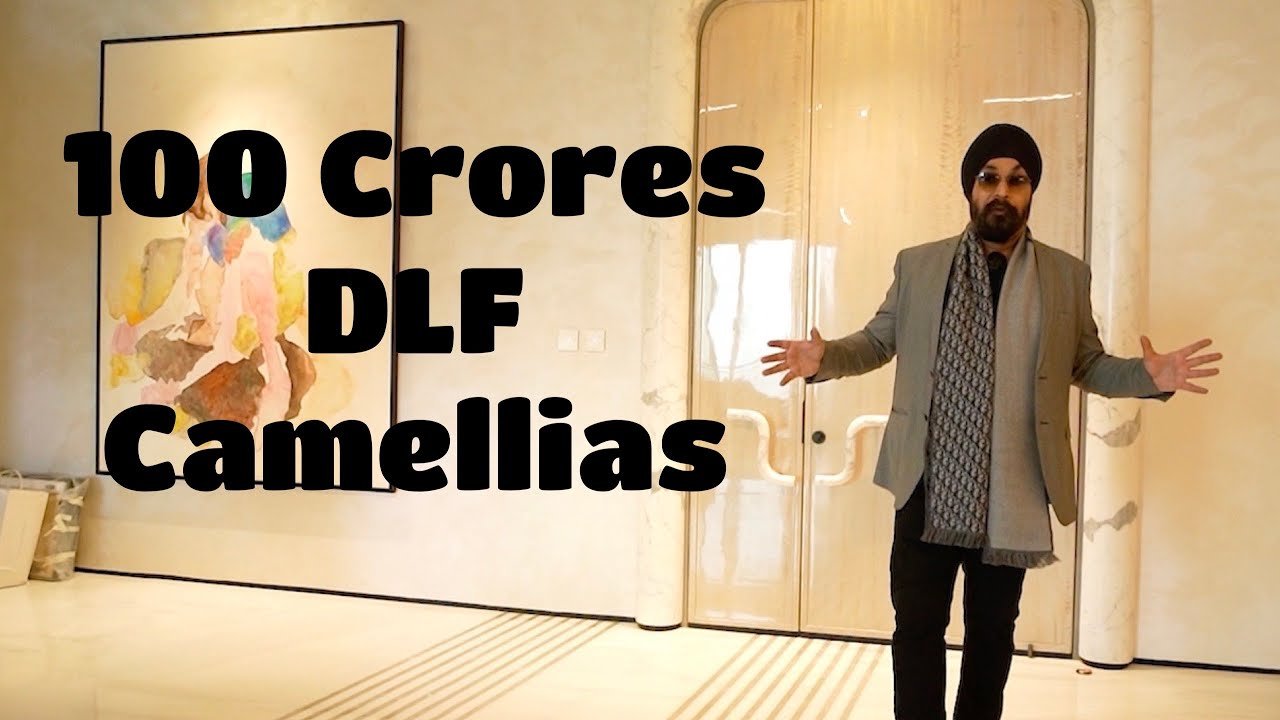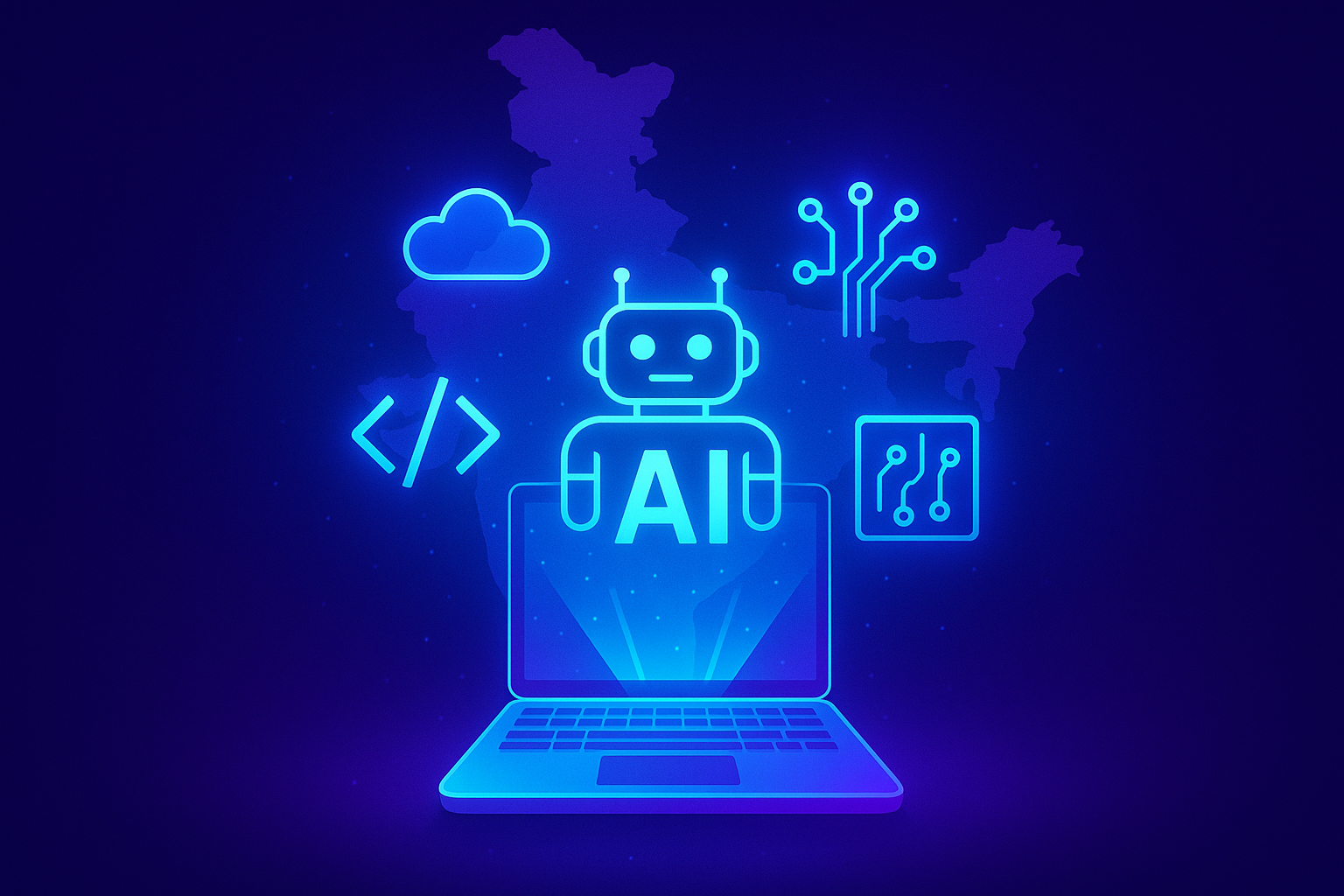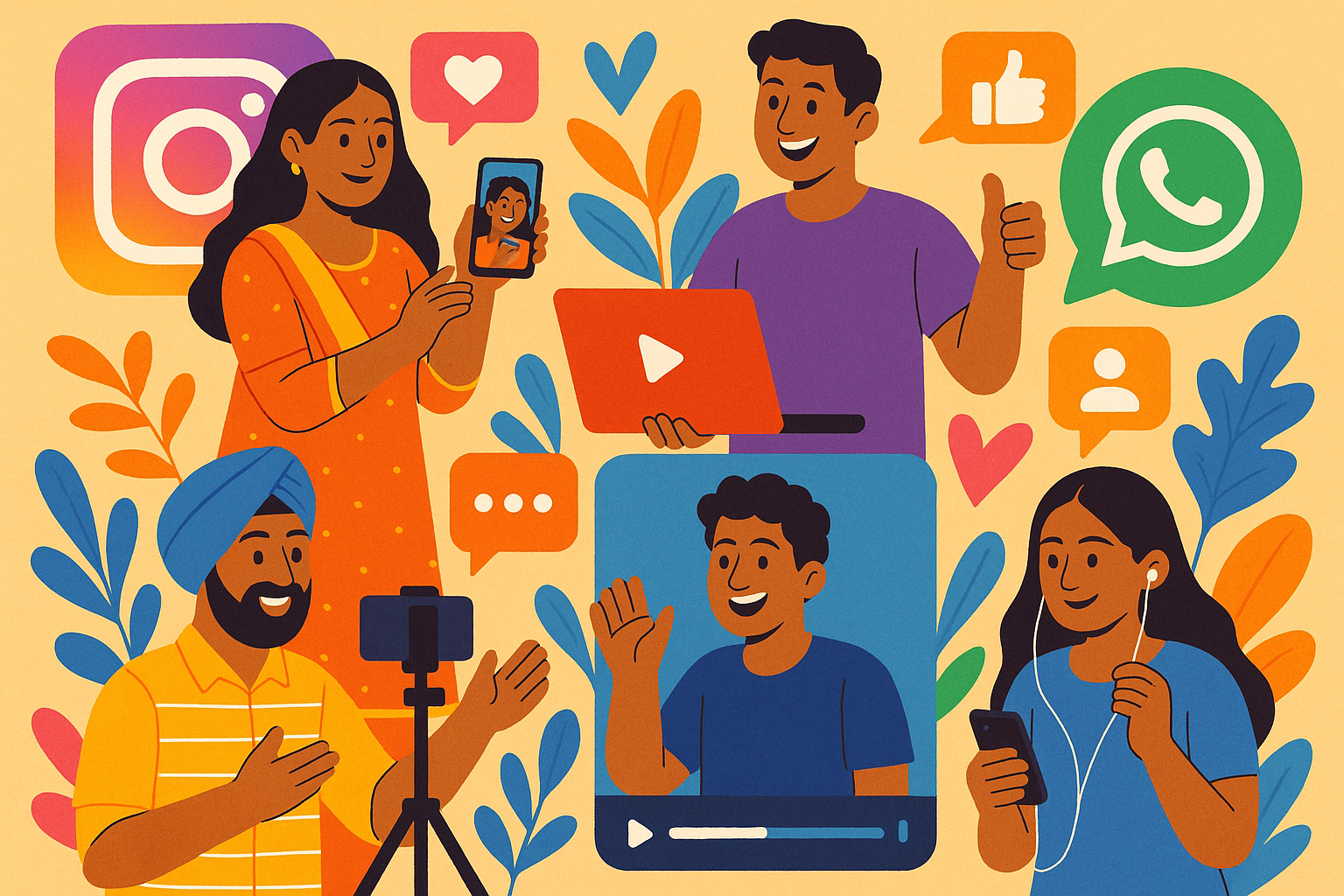In the world of social media, nothing stays the same for long. From traditional celebrities to micro-influencers, and now, virtual and AI-generated personalities, the influencer landscape keeps evolving. While this trend first took shape in the U.S., India is catching up fast. Today, virtual influencers are no longer just futuristic experiments they’re becoming real marketing assets. But what does this mean for brands? Let’s dive into the rise of AI influencers in India and what companies need to know before collaborating with them.
What Are Virtual and AI-Generated Influencers?
Think of a virtual influencer as a digital character carefully designed, powered by AI, and often managed by a creative team. They can “live” on Instagram, YouTube, or TikTok, posting content just like human influencers. Unlike traditional influencers, they don’t age, don’t get tired, and can be styled in any way the creators want.
Some are hyper-realistic, blurring the line between real and digital, while others are more stylized and cartoonish. What sets AI influencers apart is that their posts, captions, and even interactions with followers can be powered by machine learning, making them feel lifelike.
Why India Is Warming Up to AI Influencers
India has always been quick to adopt global digital trends, and virtual influencers are no exception. Several factors make the Indian market ripe for this shift:
- Young digital-first audience: With Gen Z and millennials dominating online spaces, curiosity about futuristic content is high.
- High social media usage: Platforms like Instagram and YouTube are daily companions for millions of Indians.
- Cost-effective branding: Unlike human influencers, virtual ones don’t demand appearance fees or brand exclusivity.
- Creative flexibility: A virtual influencer can be placed in Paris today and Mumbai tomorrow — without the logistics of travel.
Global Inspiration Meets Local Flavor
Globally, names like Lil Miquela (USA), Shudu Gram (UK), and Lu do Magalu (Brazil) have already built loyal fan bases. India is beginning to see its own versions emerge. Some startups and creative agencies are experimenting with digital characters that reflect local culture, traditions, and even regional languages.
Imagine a Tamil-speaking AI influencer reviewing gadgets, or a Mumbai-based digital avatar sharing street food experiences. These possibilities are not far away, and they open doors for hyper-localized campaigns.
The Advantages for Brands
For marketers, virtual influencers offer unique benefits that traditional collaborations can’t always provide:
1. 24/7 Availability
Virtual influencers don’t take vacations or get stuck in traffic. They can consistently deliver content and interact with followers, boosting engagement.
2. Complete Creative Control
Brands can design these avatars to fit their identity perfectly. From clothing to tone of voice, every detail can be tailored.
3. Risk-Free Partnerships
Unlike real influencers who can sometimes land in controversies, AI characters are fully brand-safe. Their actions are scripted, reducing the chance of PR mishaps.
4. Scalability
Virtual influencers can feature in multiple campaigns at once without physical limitations. For example, the same character can promote a luxury watch and a skincare brand in two separate markets simultaneously.
Challenges Brands Should Consider
Of course, this shiny new trend comes with its share of concerns:
1. Authenticity Questions
One of the biggest drivers of influencer marketing is authenticity. Can an AI-driven personality truly be relatable? Some audiences may find them fascinating, while others may see them as fake.
2. Emotional Connection
Human influencers can share personal struggles, stories, and real emotions. Virtual ones, however, lack lived experiences. This makes emotional storytelling trickier.
3. High Initial Investment
Building a virtual influencer requires strong creative design, AI technology, and consistent content generation. For small brands, this may be expensive.
4. Ethical and Legal Concerns
Who owns the identity of a virtual influencer? What if they unknowingly promote misleading claims? These questions are still being debated globally.
The Indian Consumer Perspective
Indian audiences are known to value personal touch and authenticity. That’s why micro-influencers and regional creators thrive here. Virtual influencers, while exciting, need to strike the right balance between aspirational and relatable.
Early experiments show that audiences are curious but cautious. They’re intrigued by the novelty but still prefer human stories. This means brands should treat AI influencers as add-ons rather than replacements for human collaborations.
Best Practices for Brands Entering This Space
If your brand is considering experimenting with virtual influencers in India, here are some practical tips:
- Start Small – Begin with a single campaign rather than a full-fledged virtual influencer partnership.
- Blend Real and Virtual – Use AI influencers alongside real creators to balance novelty with relatability.
- Focus on Storytelling – Don’t just showcase products. Build narratives that align with culture and values.
- Be Transparent – Let your audience know they’re engaging with a virtual personality. Hidden gimmicks can backfire.
- Monitor Sentiment – Keep track of how audiences are reacting. Adjust strategies if skepticism outweighs excitement.
The Future of AI Influencers in India
Looking ahead, AI-generated influencers could reshape how we see marketing. Imagine a Bollywood-inspired digital star, or a cricket-themed AI personality engaging millions of fans. With India’s booming digital ecosystem, these concepts may not be far-fetched.
But the future will likely be hybrid. Human influencers bring heart, while AI influencers bring scale and precision. Together, they could create a powerful ecosystem for brands to tap into.
Conclusion
The rise of virtual and AI-generated influencers in India is more than just a passing trend — it’s a glimpse into the future of digital marketing. For brands, the opportunity lies in experimenting wisely, balancing novelty with trust, and creating campaigns that resonate with real human emotions, even if delivered by digital avatars.
Like any tool, virtual influencers are most effective when used strategically. India’s cultural diversity, tech adoption, and storytelling traditions will shape how this phenomenon evolves. Brands that embrace this change early, while staying authentic, will stay ahead of the curve.
FAQs
1. Are there any popular virtual influencers in India right now?
Not yet at the scale of global names like Lil Miquela, but some startups and agencies are developing Indian digital avatars with regional flavors.
2. Can virtual influencers replace human influencers in India?
Unlikely. While they’re exciting, human influencers bring real-life relatability and emotional storytelling that virtual avatars can’t fully replicate.
3. How expensive is it to create a virtual influencer?
It depends on the complexity. Designing, animating, and running AI systems can be costly, making it more suited for mid-to-large brands.
4. Do audiences trust AI influencers?
Many are curious, but trust is still limited. Transparency and creative storytelling are crucial for building credibility.
5. What industries in India could benefit most from AI influencers?
Fashion, gaming, tech, and lifestyle brands could be early adopters, as their audiences are more open to futuristic and experimental content.
